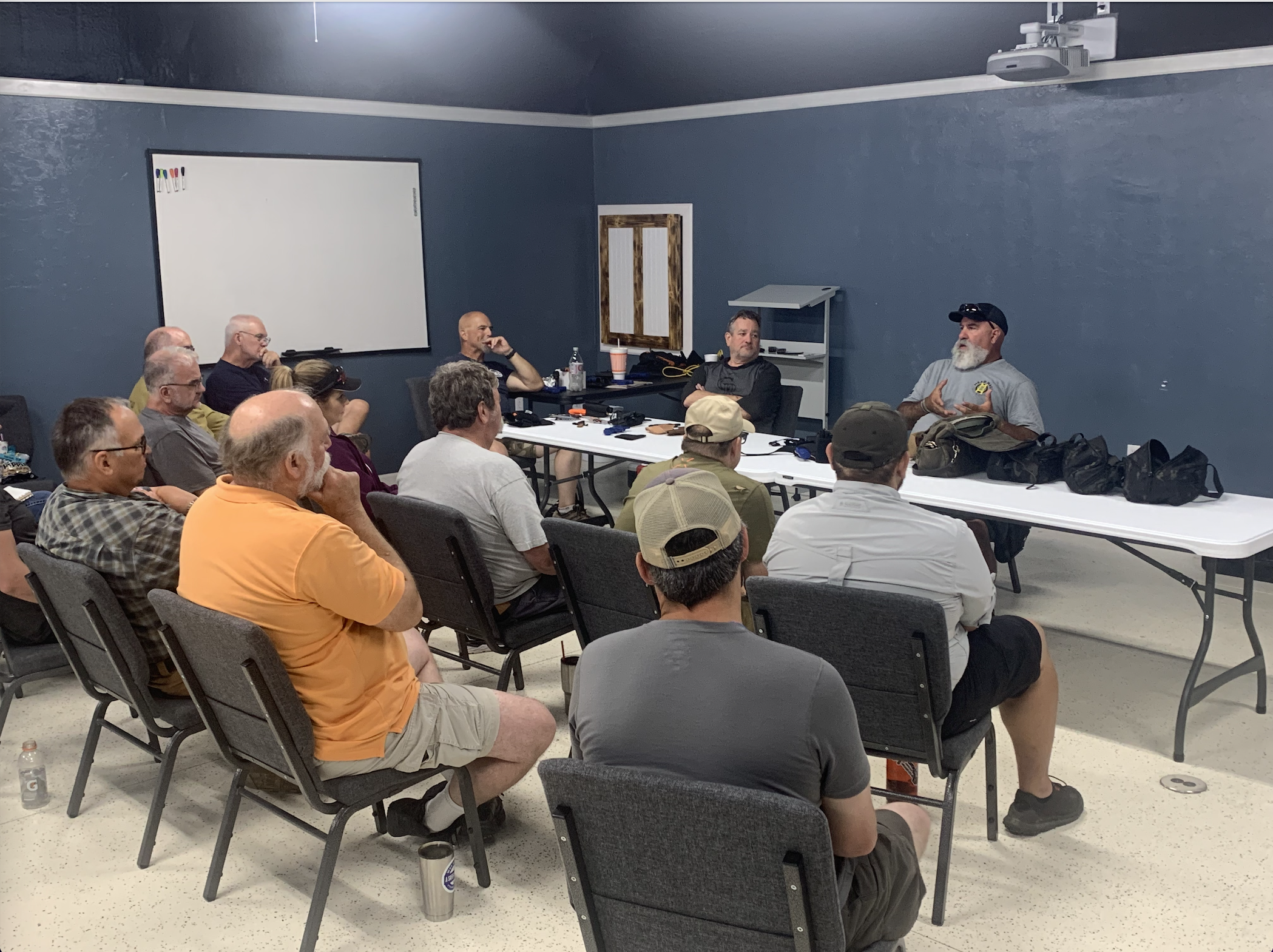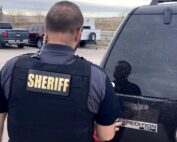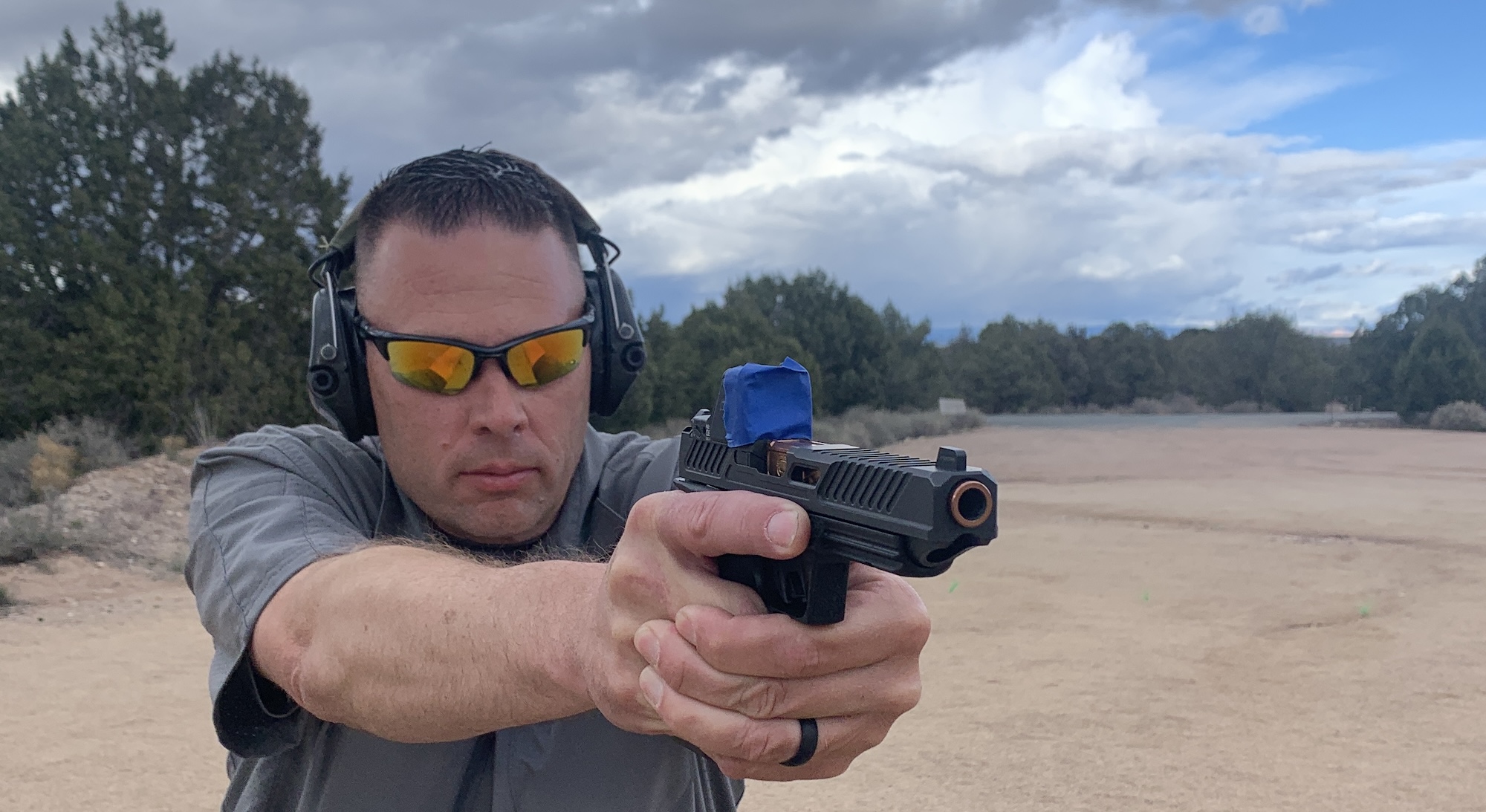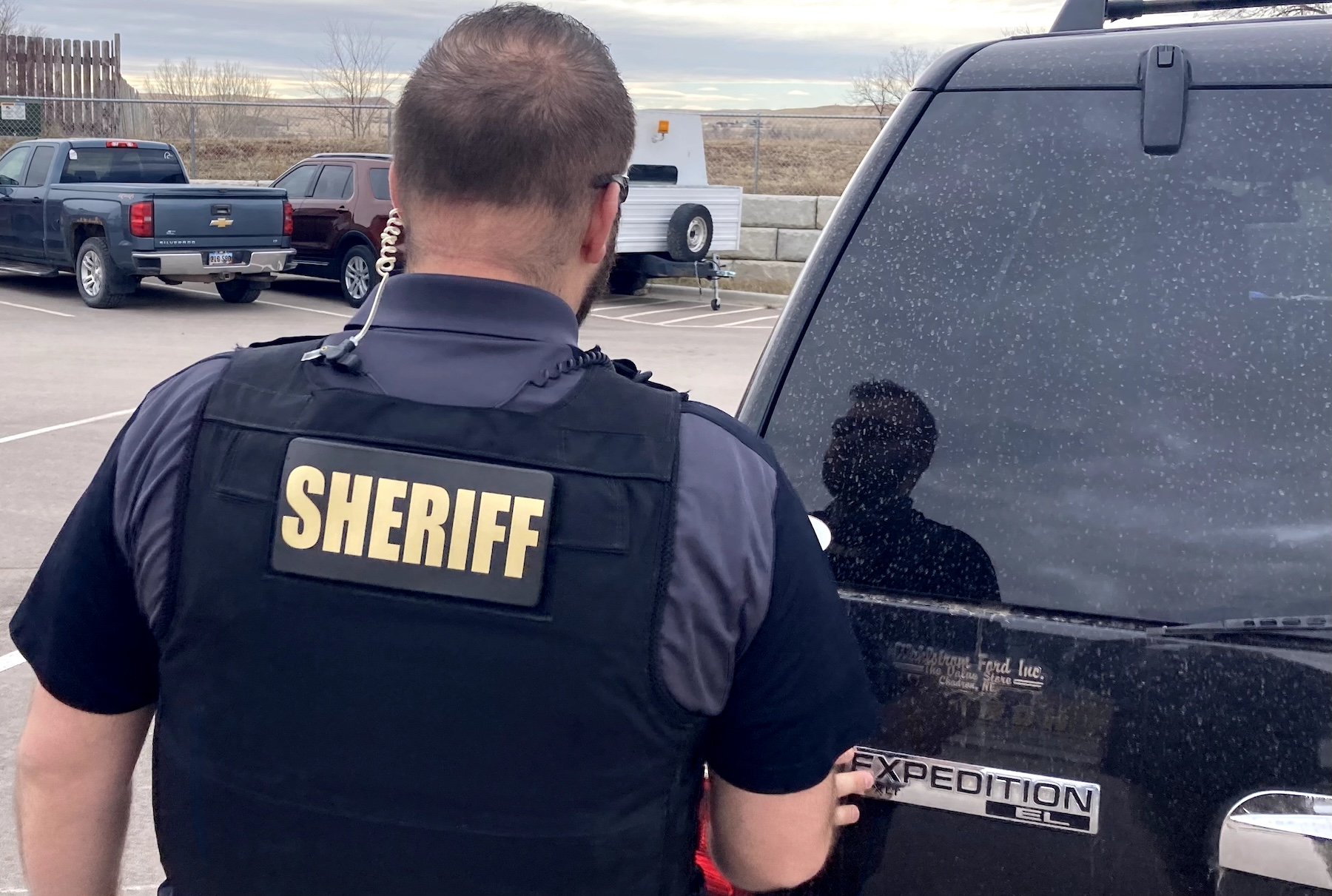
@sP1010556
This article is not about any one trainer or training facility. Instead, it is about the differences between going to a known, fixed-site facility and catching a traveling trainer locally.
Over the years, I have taken classes at Gunsite, Combat Shooting and Tactics, NRA Whittington, LA’s Eagle Nest range, Boone County Sheriff’s Office range, Boondock’s Firearms Training Academy, the police training facility in Alliance, Ohio, Dallas Pistol Club, Prado, Arkansas’ Direct Action Resource Center, and one or two more.

Boondock’s has a covered range to keep the elments off of you. It also has some very large fans to del with the heat. Here, Dave Spaulding and his A/I, Bucky, set up targets.
I’ve been involved in hosting Bill Jeans, Louis Awerbuck, Pat Rogers, and Scotty Reitz. And I’ve been very fortunate to take classes from other traveling trainers like Dave Spaulding, Steve Fisher, Scott Jedlinski, Aaron Cowan, and Tom Givens.
In between those, I’ve taught at a few local ranges, Gunsite (caveat – I work there), the Firearms Academy of Seattle, Connecticut’s state police range, and the new Route 66 Shooting Park in San Bernadino County.
If you’re going to ask me about going to a fixed school or catching a traveling trainer wherever they are, the answer is YES! Take that class, whichever one it is.
Any fixed-site school has one significant advantage – within financial limitations, the physical plant is set up to match the owners’ or lead instructors’ goals and philosophy. In addition to the ones mentioned, these schools include Thunder Ranch, Sig Academy, Constellis (Blackwater), and Mid-South – which I have not been to.
Gunsite, the original commercial shooting school, has a tremendous number of ranges and a wide variety too. For decades the school had some of the few Shoot Houses that the non-governmental student could access.

A student in a Gunsite shotgun class running the Scrambler. Dale is a very competent defensive shotgunner who trains A Lot! at all types of schools.
Both iterations of Thunder Ranch have featured well-done shoot houses as well.
Classroom facilities are something to consider depending on the nature of the class. Sometimes the lecture just can’t be done on the range, or it benefits from audio-visual aids. I have been at one or two ranges where the instructor had to bring their own projector for the lecture; they were prepared because the facility was not.
A second significant benefit is the opportunity to immerse yourself in training. You won’t be shifting back to walking the dogs or doing other chores before or after class.
The amenities and capabilities of local ranges can vary greatly. In some ways, they lend themselves to traveling trainers, especially those with great creativity. Regardless of where I took the class, I was always amazed at how much variation Awerbuck could wring out of his paper targets, never mind his diabolical moving target arrays.
While you may not get all the training aids or amenities in a class with a traveling instructor, there are benefits. If the course is local to you, travel costs – airfare, gas, rental car, or a hotel stay – may be minimal or even non-existent. If the range is nearby, concerns about food can be minimized too because you can bring it from home or have a much better idea of where to go.
Tuition is something to consider, and I would include range fees. Hopefully, a two-day class with a traveling trainer will cost less than several days at a fixed facility. Many traveling trainers will offer free seats for hosts once the minimum number of students is met.
However, you need to consider three things before you try to host a class – what does your facility offer specific to the course? Such as the number of lanes, shooting distances, and targets. How many students can you draw for the class? Rural areas of the Mountain states will see fewer interested people than suburban or urban areas. How much effort will you expend to ensure the course is a go? This requires being the intermediary between the instructor and the facility, advertising multiple times, answering questions, receiving and storing supplies, identifying and sharing information about hotels and restaurants, plus more.

Classes covering certain material may need in-depth support from the hosts. This Vehicle Combatives required multiple cars that we could shoot during the training. The staff at Boondocks’ hosted the class and covered all of the needs.
There is a third option. A purpose-built destination facility that hosts a variety of traveling instructors is becoming common. This list includes Florida’s Southern Exposure; the Alliance, Ohio training facility; and the Meadhall range outside of Oklahoma City.

Meadhall’s classroom during a recent counter-robbery class taught by Cecil Burch, Darryl Bolke, and Chuck Haggard.
Alliance has a multi-room live-fire house with a useable catwalk. The Meadhall range constantly gets rave reviews because of its amenities – the most obvious being large restrooms for both women and men in the classroom and on the range. The classroom was described to me as “modern, well-appointed, and climate-controlled.” It includes a kitchen and a simulator room as well as being usable for a variety of non-firearms training too.

One of the ranges at the Alliance, Ohio police training facility – that is open to vetted civilians. This was during a Sentinel Concepts’ low light handgun class.
Both facilities have quality accommodations within a few minutes of the ranges.
Whether you travel a half-hour to a local range, across the country to one of the fixed site shooting schools, or a couple states away to a destination host – it does not matter. Just go, get training, get better training. If you are a police officer or service member, no one in your organization loves you like you. Make sure you are getting the training you need. If you are not in one of those jobs, you still need to seek better training to prepare for identifying and avoiding a situation or prevailing in the situation if you can’t get away from it.

















